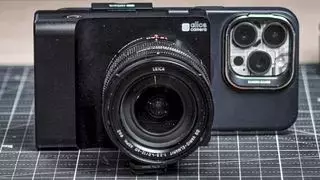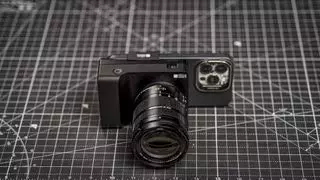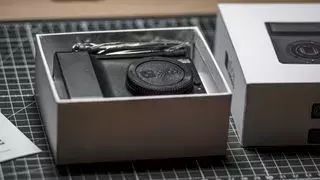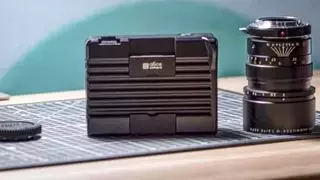






Unlock the Potential of Photography with Alice Camera
Sensor and Lens Mount
The Alice Camera features a Micro Four Thirds sensor and lens mount, offering a wide range of affordable and lightweight lenses. This setup provides the best of both worlds – the processing power of a smartphone and the optical performance of a proper camera. It's a game-changer for photographers who want to expand their creative possibilities without breaking the bank.Compared to traditional cameras with complex menus, the Alice Camera's interface is intuitive and user-friendly. It's as easy to use as a smartphone camera app, yet it offers advanced features that allow you to control everything from shutter speed to white balance. With real-time sharing of your shots, you can instantly showcase your work to the world.
Processing Power and Software
Powered by a Snapdragon chip, the Alice Camera harnesses the processing power of a smartphone to deliver exceptional performance. Its software is open source, allowing users to build extra features and settings. This gives photographers the freedom to customize their camera experience and make it truly their own.In contrast to leading camera brands like Canon and Sony, which maintain strict control over their software, the Alice Camera empowers users to explore and innovate. It's a breath of fresh air in a market dominated by closed systems.
Design and Build Quality
The Alice Camera has a premium metal body that is lightweight and ergonomic. It feels solid in the hand and provides a comfortable shooting experience. The secure phone grip can accommodate smartphones ranging from the iPhone mini to the iPhone 16 Pro max, making it versatile for different users.The unboxing experience is like discovering a hidden gem. The sleek design and metal finish add a touch of luxury, while the internal components, such as the unique identifier that links the Wi-Fi on your phone to the camera, are essential for seamless pairing. The camera strap and overall build quality enhance the premium feel of the device.
Performance and Capabilities
Equipped with a Qualcomm Snapdragon and Google AI chip, the Alice Camera excels in computational photography. It captures 11MP photos that are perfectly suitable for everyday photography and social media. The 4K 30fps and 2K 60fps video captures high-quality footage, making it ideal for content creators and vloggers.Despite some challenges with manual focusing, especially outdoors, the Alice Camera has delivered some stunning images. When paired with high-quality lenses like the Leica 90mm, the results are sharp and full of character. The smooth resistance in the focus wheel makes manual focusing a more satisfying experience.
Price and Availability
At the time of writing, the Alice Camera costs $845 / £1,026. Pre-orders for batch 4 are available, and prices may vary depending on the batch of backers. While it may not be the cheapest option, it offers unique value. Considering that most of us already own a smartphone, the cost is mainly for the camera and lens. And for that investment, you get the ability to instantly share and livestream high-quality photos and videos.When compared to other cameras in the market, the Alice Camera stands out with its combination of convenience, innovation, and quality. It's a worthy investment for photographers who want to take their skills to the next level.
How to Test and Use the Alice Camera
I bought two Alice Cameras and used them as my primary cameras for over one month. I took them on early morning photo walks, portrait shoots, and used them for both stills and video. The camera handled moving subjects well, although manual focusing could be a bit challenging at times.I paired the camera with different lenses, such as the Lumix 25mm f/1.7 and the Leica 90mm f/2 APO-Summicron. Shooting in RAW format allowed me to capture high-quality images with great detail. I also experimented with different apertures to achieve the desired background blur.
